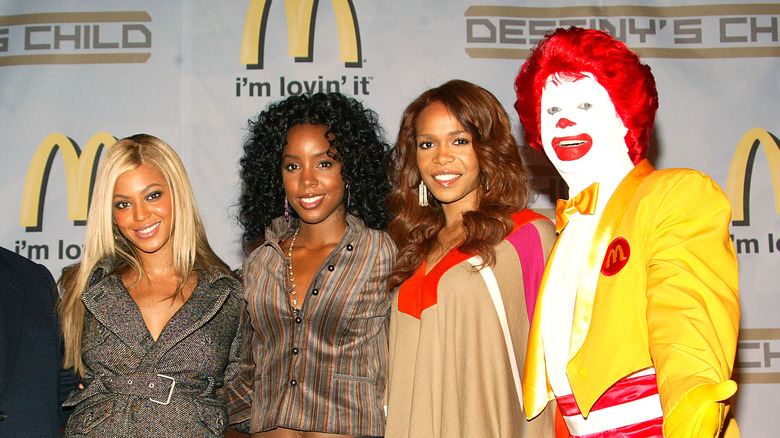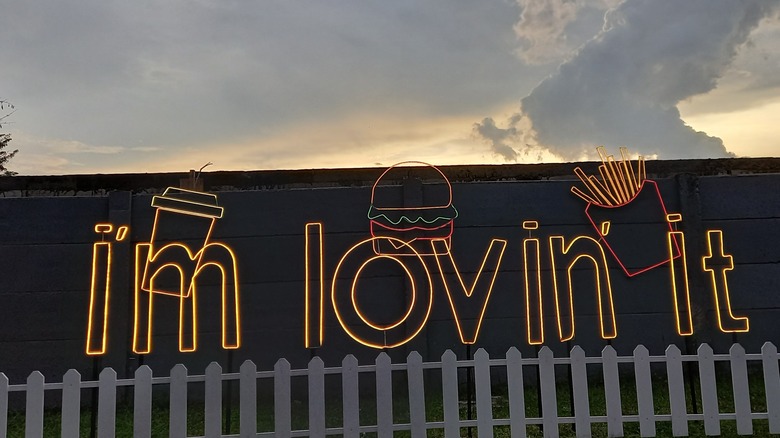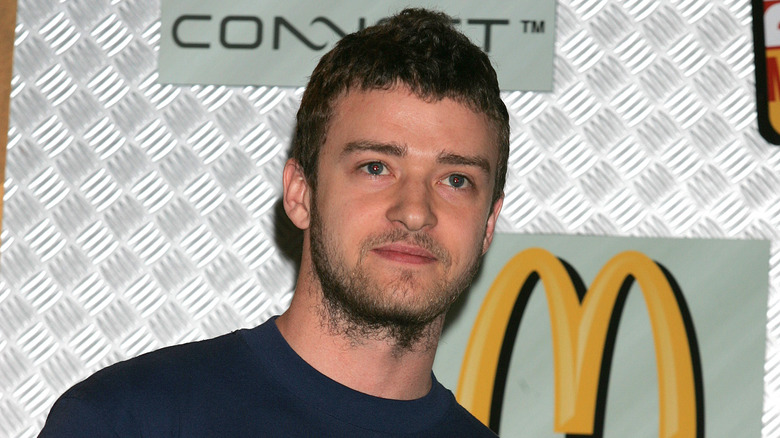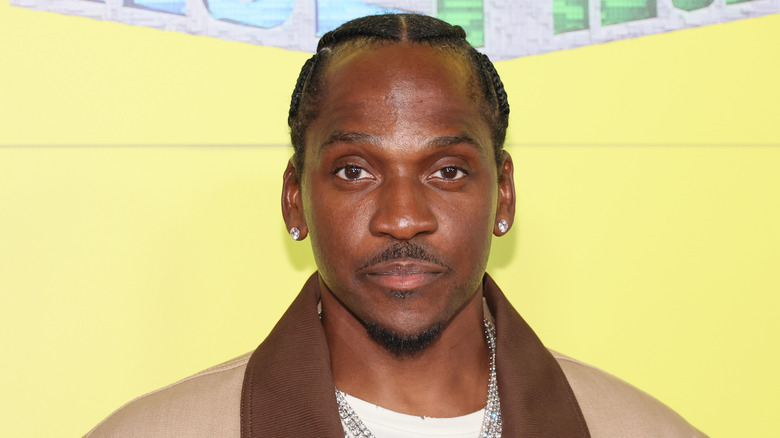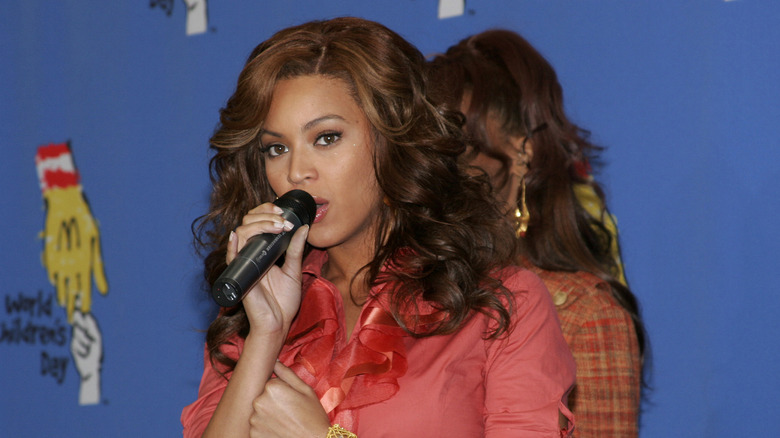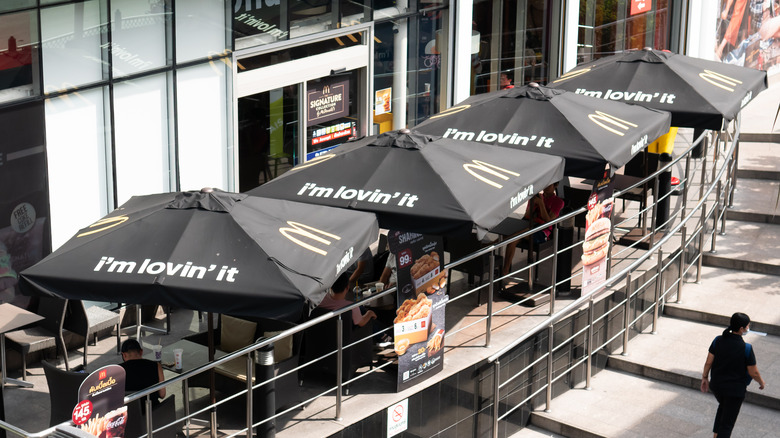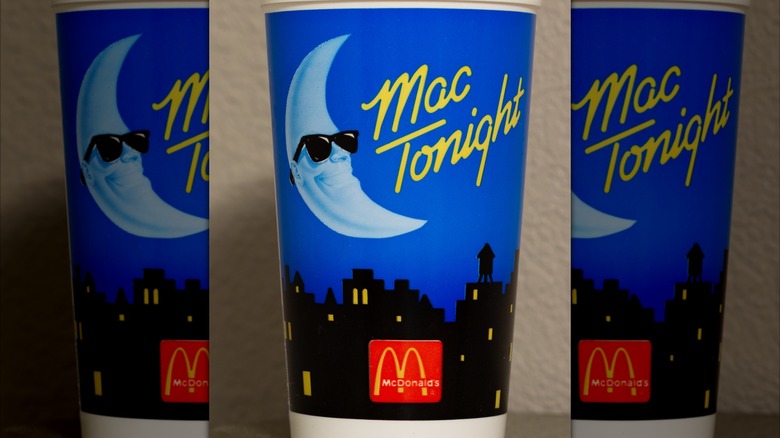"I'm Lovin' It": The History Of McDonald's Most Popular Jingle
Advertising slogans set to music — otherwise known as commercial jingles — are a unique mix of art and commerce. Necessarily memorable, hummable, and catchy, these very short melodies are written, recorded, and placed into TV and radio ads with the sole purpose of sticking in consumers' heads to create a positive association with whatever product is being sold. It's an insidious form of marketing, but an effective one.
Although some jingles rank among the most recognized musical compositions in the contemporary world, because they're so short and played so often, jingles tend to burn themselves out. Food producers and their advertising agencies often retire the songs after a couple of years, at most.
And then there's McDonald's, with its "I'm Lovin' It" campaign. Introduced in 2003, the associated jingle of five notes — "ba-da-ba-BA-BAAA" — is undeniably tight and hooky. But where did it come from, and why is it so indelible? Here's a look into the surprisingly complex origins and impact of the McDonald's commercial jingle.
Before it had music, I'm Lovin' It was a slogan
McDonald's figured it could emerge from a prolonged sales slump in the early 2000s with a new marketing campaign that would provide the brand with a much-needed refresh. Executives decided that they wanted a commercial jingle at the forefront, and to find it they launched a massive tender for proposals. The fast food giant approached 14 different major global advertising companies, and the entry it liked best came from Germany-based agency Heye & Partner.
However, that firm didn't quite correctly enter the competition — it delivered McDonald's a three-word slogan instead of a fully realized jingle. But that slogan was strong enough that McDonald's agreed to develop it. That phrase, in its original German? "Ich Liebe Es" — which translates roughly to "I'm Loving It."
The phrase still needed a jingle, so McDonald's took that slogan, translated into English, to a music production firm called Mona Davis. Founders Tom Batoy and Franco Tortora took on the task, tinkering with possible melodies until they cracked the code during one late night fueled by white wine. They landed on a five-note tune: "ba-da-ba-BA-BAAA." The key was in the melody's simplicity. "It wasn't big science," Batoy told "Twenty Thousand Hertz." "It was basically more that you hear and you develop something, and then emotionally get grabbed."
It took a worldwide effort to develop the McDonald's jingle
After Mona Davis musicians Tom Batoy and Franco Tortora nailed the melody that would become the "I'm Lovin' It" jingle, they had to convince the McDonald's leadership that this tune could work as the company needed it to — in different lengths, in many countries around the world, and adapted to a disparate variety of musical styles. "We had to develop long versions. We had to develop short versions. We had to develop costs. We had meetings, like, all the time. So we would just be sitting for a week in air-conditioned rooms and developing the realization of this campaign worldwide," Tortora told "Twenty Thousand Hertz."
The musicians entered into a corporate environment where McDonald's wasn't a single entity, but a network of representatives from the company's businesses around the world. At the time, McDonald's in every country had its own separate marketing team and agency. Batoy and Tortora had to convince all of them that the new sound was right for McDonald's, and that their ongoing ad campaigns for the fast-food chain would either end or be superseded. "We had these huge meetings and they had to tell them, 'You have to stop all your work, because from now on, this will be the thing you have to incorporate in all your work,'" Batoy said in the "Twenty Thousand Hertz" interview. "You have to use this no matter what."
Justin Timberlake helped kick off the McDonald's jingle
McDonald's knew it had a winning jingle. However, its executives also knew that for the jingle to take hold in the noisy 21st-century media landscape, it would have to be set loose via nontraditional marketing methods. The chain and its advertising team worked with veteran music industry professional Steve Stoute to familiarize audiences with the tune before they'd hear it in a commercial or associate it with McDonald's. While well-liked pop songs are often turned into ad jingles, McDonald's wanted to reverse-engineer the process — to make its jingle into a well-liked song first, and then unveil the ad campaign around it.
Stoute oversaw the writing and recording of the radio-friendly pop-song version of "I'm Lovin' It", performed by one of the era's biggest pop stars — Justin Timberlake — along with the Neptunes, aka Pharrell Williams and Chad Hugo. (Andreas Forberger, the creative director at Heye & Partner, the German ad agency that originated the slogan "I'm Lovin' It," also received a songwriting co-credit.)
The track, with no mention of McDonald's in the lyrics, was reportedly leaked by summer of 2003, likely on purpose. It wasn't until later that year, after the song gained popularity, that McDonald's declared the partnership with Timberlake. The earworm had burrowed its way into listeners' brains for good, just in time for McDonald's to launch the "I'm Lovin' It" ad campaign with a spot featuring Timberlake.
Pusha T claims to be a creator of the McDonald's jingle
From the beginning, "I'm Lovin' It" was designed to be the focal point of an international advertising campaign utilizing numerous languages. McDonald's localized the Justin Timberlake version of the long-form jingle with rap verses by vocal artists from different countries. The English-language version for the U.S. had lyrics performed by Clipse, the hip-hop duo comprised of brothers Pusha T and No Malice.
According to a key figure who worked on the song, Pusha T may have written the entire song-length version of the jingle. "You know who did that? Pusha T. That's crazy that Pusha T wrote the song to McDonald's," overseeing recording executive Steve Stoute said in an interview with Hot 97 (via Rolling Stone). After the rapper publicly corroborated Stoute's assertion, it got picked up by media outlets and spread as fact — which the composers of the original five-note sequence deny. "'Pusha T' was never involved in the creation of the McDonald's jingle 'I'm Lovin' It,'" Tom Batoy stated to Pitchfork, reiterating that he and Franco Tortora were solely responsible for the tune's composition.
What's not debatable is Pusha T's frustration with a perceived lack of credit and financial remuneration for his contribution to one of the most famous jingles in fast-food history. Adding to the list of things about McDonald's Filet-O-Fish you need to know: Pusha T lyrically took down that sandwich in his "Spicy Fish Diss Track." An anti-McDonald's screed, Pusha T created the song on behalf of Arby's, which is known to sell one of the best fast-food fish sandwiches.
I'm Lovin' It has been repurposed for other musicians
McDonald's initially planned for the "I'm Lovin' It" marketing campaign to run for just two years. But it proved so popular that instead of replacing the slogan and jingle, McDonald's chose to enlist different artists to re-record and repurpose "I'm Lovin' It" to suit different products and promotions. By 2005, McDonald's convinced Destiny's Child — still including Beyoncé, after her solo-career launch — to sing those already-famous five notes and appear in a commercial.
In more recent years the slogan and jingle was utilized to promote an entire series of McDonald's celebrity meals, featuring musicians like Travis Scott, J. Balvin, BTS, and Cardi B with Offset. For kid-oriented marketing drives, McDonald's had the Minions from the "Despicable Me" movies sing the jingle, while Donkey from "Shrek" has said the slogan. "I'm Lovin' It" is so well-known as a piece of McDonald's culture that when the chain hired "Succession" star Brian Cox in 2020 to narrate its commercials, the actor ended his performances with a dashed-off a cappella version of the jingle.
The I'm Lovin' It campaign cost a lot, but it was worth the investment
McDonald's has an immense impact on the U.S. economy, responsible for more than $100 billion of the country's annual gross domestic product. Since 2003, at least a portion of those staggering sales figures are undoubtedly the result of the rollout and persistent popularity of the "I'm Lovin' It" slogan and jingle.
McDonald's is reported to have paid Justin Timberlake $6 million for bringing "I'm Lovin' It" to life and into the public consciousness. In an interview with GQ, Timberlake said that the fast-food company's "market share went up by 25% when I walked into those offices and changed their image." While Timberlake may not have provided an entirely precise figure, the spirit of the argument is correct — McDonald's reported revenues of $15.4 billion in 2002; by 2022, that total was up to over $23 billion. A McDonald's marketing executive estimated that the entire "I'm Lovin' It" program represented "a multi-billion dollar asset" to the company, according to "Twenty Thousand Hertz."
I'm Lovin' It sent other McDonald's jingles down the memory hole
Decades ago, McDonald's routinely rebooted its advertising by introducing new jingles to replace ones used for the prior year or two. However, the chain has used the "I'm Lovin' It" slogan and accompanying jingle for an unprecedented length of time — more than 20 years and counting. The campaign is so entrenched and widely known that it has diminished memories of the burger giant's previous slogans and jingles, which were once similarly omnipresent and inescapable.
During a downturn in business that led to the introduction of "I'm Lovin' It," McDonald's ads in the early 2000s promoted the slogan "We love to see you smile." That one replaced the late 1990s tagline, "Did somebody say McDonald's?" In the 1980s McDonald's played around with various approaches to advertising and marketing, including the patriotic "America's Meat and Potatoes" campaign — as well as the once-iconic "Mac Tonight" commercial. Creating a character beyond the chain's Ronald McDonald-centered forgotten titans of McDonaldland, Mac Tonight was a personified, ever-smiling crescent moon who encouraged grown-ups to visit McDonald's for dinner and late at night. The slogan and character figured in ads with the moon man singing a take on the 1928 jazz standard "Mack the Knife," with "Mac Tonight" simply subbed out for the title. Perhaps it's not so surprising that the modern musical artists behind "I'm Lovin' It" have created a jingle with considerably more staying power.
